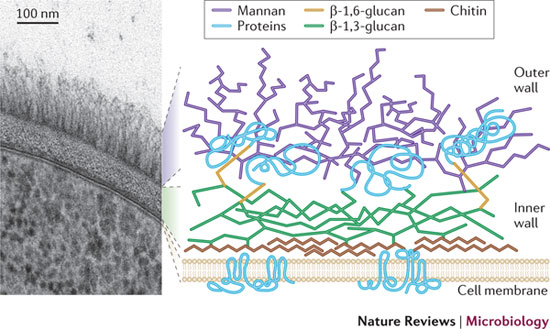Submitted by GAtherton on 13 December 2016
Fungi such as Aspergillus and Candida have been around on earth far longer than the human race. They would have been plentiful in the environment of our ancestors and being largely opportunists they are known to be more than willing to take advantage of any food source that might emerge. In the main these food sources were and still are the remains of plants and animals after they have died – indeed fungi are thought to have played a part, possibly a large part in the death of the age of the dinosaurs 65 million years ago. They may also have played a part in the subsequent domination of the earth by warm blooded mammals and marsupials as fungi find it extremely difficult to grow in warm (body temperature) conditions and fungal infection of those animals is consequently very rare.
There are a few examples of fungi that have evolved to grow in warm temperature – Aspergillus species (especially fumigatus) tend to predominate in rotting piles of plant matter as the temperature in the pile rises due to decomposition. This ability can’t be easy to acquire as few microbes can do this to this day so A. fumigatus has almost sole access to the nutrients in a compost heap at this stage of rotting. As a consequence we might imagine that Aspergillus is one of the more adaptable fungi, and this is borne out when we look at its pathogenic capabilities. We know it has adapted to live and grow in warm growth conditions and we know that filamentous fungi have structural strengths that enable them to penetrate tissue such as the thin linings of our lungs. We also know that like most fungi it can excrete enzymes that help it disrupt cell walls of the host tissue and even secrete toxins that disrupt the hosts immune response. Despite all that fungi are generally unable to infect our bodies other than superficially. Our immune system defences are too strong for them – but they are still trying to attack and in a few cases they succeed in a limited way.
A recent paper describes how another fungus, Candida, has evolved to evade our immune systems and this may give us clues about mechanisms other fungus might also use. Normally our immune system will sense an invading microorganism, often by detecting the proteins or sugars on the surface of the invader. Our immune system knows what proteins & sugars should be found in the body it is protecting and will react to anything it finds that are different. Candida combats this by sensing when it is in its host and then changing its cell surface sugars to evade the hosts immune system! This is an active process so uses up energy and would penalise the fungus if it expressed this defence mechanism when it was not needed e.g. when it is growing outside the host – so Candida can also switch off the defence system when not needed!
It is clear that fungi are still working hard to try to overcome our defences to infections. We know that we usually overcome all attempts by fungi to infect us but we also know that if our immune system is not kept in good health it will not take long for fungi to take advantage. Even in a host with a fully active immune system there are parts that are less well protected e.g. tissue that has already been damaged by another infection can be vulnerable to infection by fungi if the scarring is not well supplied with blood – we see this in people who have had tuberculosis for example. We must remain aware, vigilant and proactive.
For full details of all major systemic fungal infections go to Life-Worldwide
News archives
-
Title
Date



